The Beginning of Europe’s Largest Carnival Part II
“The UK Soca Scene is huge, it’s not only necessarily the UK, in the UK alone there is 36 Carnivals that are dedicated to the Caribbean culture, however there is only 19 that represent what we actually doing, out of those 19, you will probably gonna get about 5 that is really on the list, that’s really pushing it forward”….excerpt from 3 Soca Lovers
Robert Nesta Marley neatly coined the Jamaican motto ‘Out of many, One People’. One soca lover eloquently put it, ‘nowhere else has one country having so many Carnivals representing the Caribbean culture’.
This is where it began…..
In what historians have termed the Age of Discovery, an archipelago off the north eastern coast of Venezuela was captured by the Spanish, who invited Great Britain’s cousins, from neighbouring islands to come and settle. Following a further capture of the island, Great Britain claimed Trinidad as its own and thus together with the French who were already settled there, followed the introduction of Carnival.
Preceding the weeks before Easter, the French and British engaged in a flurry of festivals which included merry making, feasting and entertainment. Blacks were not invited to partake in these celebrations, however were made to entertain their masters. In 1838 following the Emancipation of Slavery and having been repressed for so long, black people took to the streets in a symbol of freedom thus beginning their own version of Carnival, their party, their celebration.
It was in Harlem, New York that Notting Hill Carnival’s visionary was raised. An activist, Claudia Jones was born in Trinidad in 1915. In 1955 through her efforts to fight for the justice of black people, she was deported to England where she continued her fight, this time serving the Caribbean community in London through her newspaper. In what was the prolonged race riots of 1958 that followed the murder of Kelso Cochrane, a young Antiguan man, Claudia Jones had a vision born out of a social protest. Believing in what the spirit of carnival meant back home in Trinidad and its power in unifying different people of different cultures in a celebration, Claudia Jones alongside Amy Ashwood Garvey came about the idea of staging the first ever Carnival in UK. This was more like a local event that united all West Indians living here at the time as they had not interacted widely before coming to Britain.
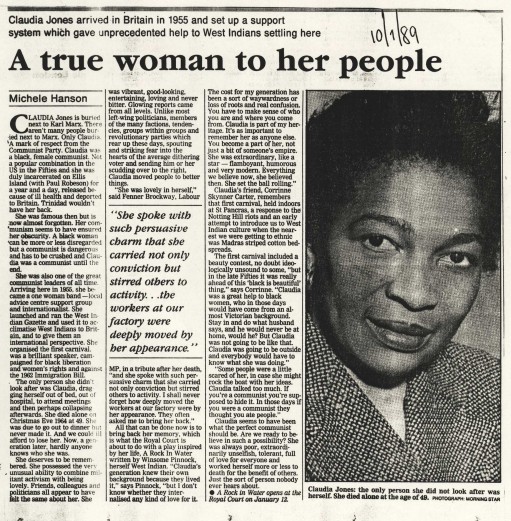 Whilst all preparing and organising took place in Notting Hill, the midst winter of 1959 saw the first carnival being held in a hall in St Pancras Town Hall. Whilst confined to the small space that they occupied, the carnival was a resounding success and included elements such as the crowning of the Queen, a performance from Trinidad calypsonian, The Mighty Terror and various showcases of dance. This was a coup for the event and was captured and televised by the BBC, to coincide with the most famous Caribbean carnival, Trinidad and Tobago. In a succession of years that followed, Claudia Jones kept carnival going along with notable Caribbean artists and J’ouvert traditions that made up carnival such as jab jab. In 1962 the calypso singer, Mighty Sparrow graced carnival and it was in the same year that carnival was introduced to Manchester, where Lord Kitchener, an internationally known calypsonian was residing at the time.
Whilst all preparing and organising took place in Notting Hill, the midst winter of 1959 saw the first carnival being held in a hall in St Pancras Town Hall. Whilst confined to the small space that they occupied, the carnival was a resounding success and included elements such as the crowning of the Queen, a performance from Trinidad calypsonian, The Mighty Terror and various showcases of dance. This was a coup for the event and was captured and televised by the BBC, to coincide with the most famous Caribbean carnival, Trinidad and Tobago. In a succession of years that followed, Claudia Jones kept carnival going along with notable Caribbean artists and J’ouvert traditions that made up carnival such as jab jab. In 1962 the calypso singer, Mighty Sparrow graced carnival and it was in the same year that carnival was introduced to Manchester, where Lord Kitchener, an internationally known calypsonian was residing at the time.
In 1964, Claudia Jones passed away and along went carnival. It was Rhaune Laslett a social activist born to Native Americans who staged her own version of carnival, spurred on by her community work. With a need to unite the poor area of Notting Hill, she invited Spanish, Portuguese, Irish, Caribbean’s and Ukrainians to contribute to an event that would culminate with an August bank holiday parade. What followed was an array of cultures parading down the road, a heavy Trinidadian influence which included costumes, Caribbean food, calypso and pivotal to this the inclusion of Russ Henderson, the steel band player. It was in noticing the dreariness of the carnival that Russ Henderson encouraged his group to ‘chip’ down the road playing their pan. It was the music and vibes that enticed spectators to join and dance through the streets of Notting Hill Carnival and in a single moment and turn of events, Russ and his band had succeeded in bringing the spirit of Caribbean carnival to Rhaune’s street parade.
Following the success of this Rhaune Laslett, ran carnival until 1973 and alongside the Caribbean community organised Notting Hill Carnival, where it was taken over by Leslie Palmer who introduced sound systems and costume bands.
Notting Hill Carnival as it stands is open to everyone. It continues despite its setbacks and future to showcase the spirit that is carnival and that bore it. It is in its early success that it has influenced and paved way for other carnivals countrywide, most notably Luton Carnival, Liverpool Carnival, Leicester Carnival, Manchester Carnival, Bristol Carnival, Reading Carnival to name a few.
‘Every Spectator is a Participant’
Missed our rare intro video featuring Soca Prince Martin Jay and DJ Barrie Hype? Catch it here
Next in series: The Future, Ole’Mas versus Modern Mas


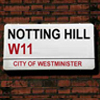
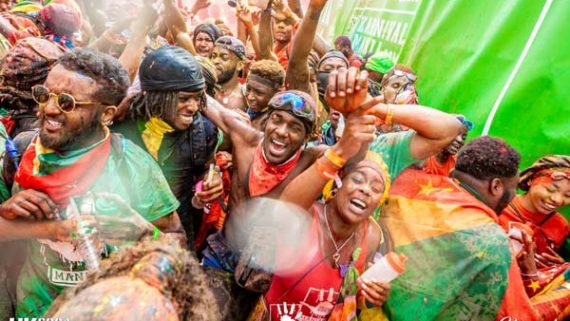
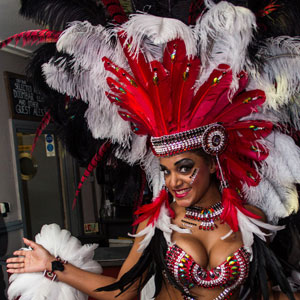

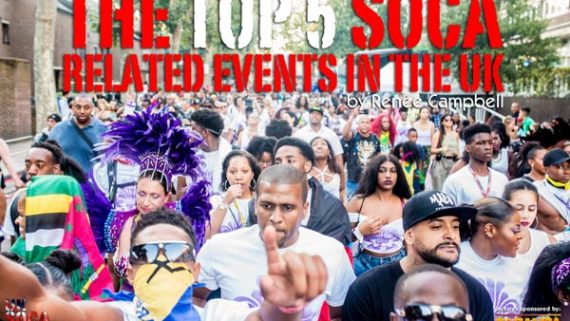
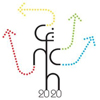


Comments
No comment yet.